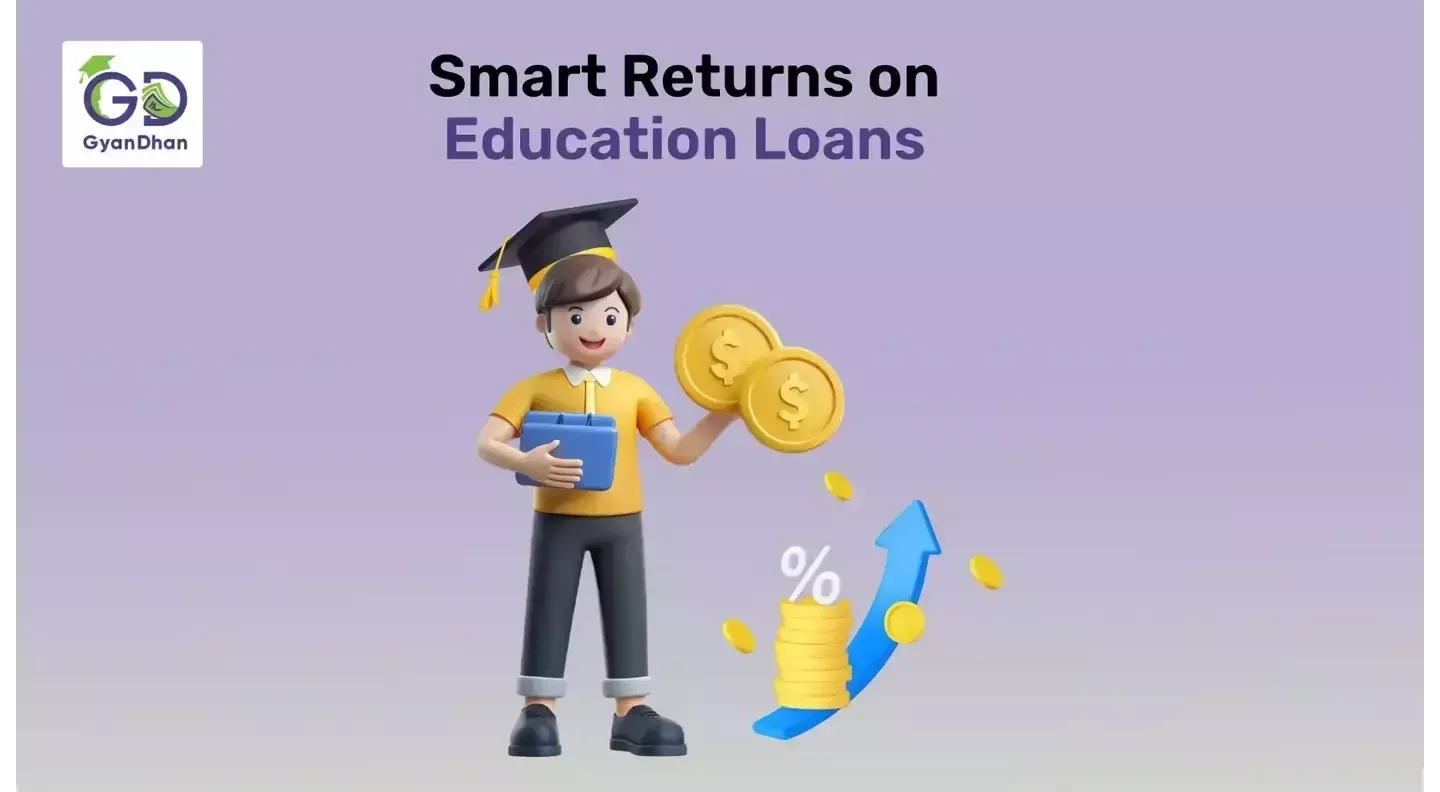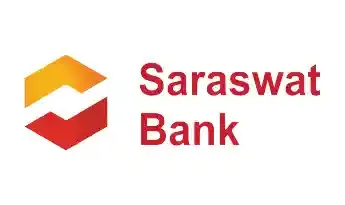Get instant loan offer suitable to your profile !


On this Page:
Learn how to calculate ROI in education loans and why it's crucial for students planning to study abroad. Discover tips to maximize your returns and make informed financial decisions
Understanding "What is the ROI of an Education Loan?" is crucial for students and families to commit to higher education. This blog aims to shed light on this critical aspect and provide a comprehensive guide to evaluating and improving education loan ROI. We provide actionable insights to navigate the complex education financing landscape by comparing lender terms, analyzing loan amounts and interest rates, and highlighting other factors critical to improving ROI. This guide is designed to help you make informed decisions and ensure that your investment in education pays off in the long run.

When evaluating the refund of the loan for education, some important factors participate in the game. Interest rates, loan size, conditions for composing repayments, and expected salaries after graduation are very important. These factors combine to affect the overall cost and financial feasibility of an education loan, highlighting the importance of strategic planning and informed decision-making for students looking to maximize the value of their education investment. Here are some of the factors to consider:
Interest rates are important as they directly impact your monthly payments and the total amount paid over the life of the loan, thus affecting the ROI of your education loan. For example, a 10 % interest rate loan is much more expensive than credit at a rate of 8 %. It is important to compare the rates of various banks and take into account the effects of fixes and vibration rates on long -term payments.
The principle of only borrowing what you need can't be emphasized enough: the larger the loan amount, the more interest you'll pay, and the higher your total repayment amount. However, investing in a quality education can increase your employability, boost your salary, and improve your return on investment. Consider the cost of your program and the possibility of a pay increase after graduation.
Loan tenure and repayment terms such as deferral or forgiveness options play an important role: a longer repayment term will reduce your monthly repayments but will increase the total interest you pay. Flexible repayment options provide breathing room for graduates entering the job market.
Earning potential in your chosen field is perhaps the most important factor affecting your return on investment. Research the average salaries of graduates from your program and compare them to the cost of the loan. Higher wage sectors may need to borrow more, while lower wage sectors may need to borrow more cautiously. You can estimate your future potential earnings here.

This comparison of lenders based on loan amount and interest rate to know the return on investment of an education loan can be helpful. A good balance between loan amount and interest rate can help you get a better return on investment (ROI) in education loans.
| Lender Name | Maximum Loan Amount | Rate of Interest |
|---|---|---|
|
Up to 1.5 Cr INR |
Male: 9.15% Female: 8.65% |
|
|
Up to 1.5 Cr INR |
7.1% - 10.35 % | |
|
Up to 1.5 Cr INR |
7.5 % - 12.25 % |
|
|
Up to 1.5 Cr INR |
9.5 % - 12.5 % | |
| Up to 1.5 Cr INR | 10.8% - 13.0 % | |
| Up to 1.5 Cr INR | 8.95% - 13.0 % | |
|
Up to 50 Lakhs INR |
11.0% - 14.0 % | |
|
Up to 60 Lakhs INR |
11.0% - 14.0 % | |
| Up to 1.25 Cr INR | 10.25% - 14.5 % | |
|
Up to 100,000 USD |
9.99% - 13.99 % | |
|
Up to 100% cost to study |
8.47% - 13.0 % |
Interest rate as of September 2025*

If you are looking for an education loan that maximizes your return on investment, then you should consider various factors that affect your ROI. A loan with lower costs, flexible repayment options, and minimal hidden charges impacts the financial benefits of your education loan significantly. Below-mentioned factors will help you determine the loan options with the best ROI.


If you're taking a higher loan for an MBA or Medicine, a floating rate might offer savings over time and would be the right decision for you. However, if your expected salary growth is moderate then a fixed rate ensures certain repayments.







When evaluating education loans from top banks, it's important to look at more than just the interest rate:




Fixed and variable interest rates are important options to consider when taking out a loan. A fixed interest rate stays the same for the life of the loan, meaning your monthly payments are predictable. This stability can be useful for establishing a budget, because your payments will not increase, even if market rates increase. On the contrary, the floating (or variable) interest rate fluctuates according to market conditions, which means that your payments can change over time. Although floating rates can start rates lower than fixed rates, they risk increasing. The choice between fixed and floating rates depends on your financial objectives and risk tolerance.

Maximizing 'What is ROI in Education loan?' involves a holistic approach before, during, and after your studies. While studying, studying, I understand the essential approach after, and later. This complex strategy includes a detailed choice of an educational program, a reasonable financial management during training, and an effective loan repayment planning. This approach ensures that every stage of education contributes positively to economic well-being and increases the return on investment in education. Maximizing ROI requires strategic planning before, during and after training.




Investing in education is a major financial decision that requires careful consideration of various factors to maximize ROI. Understanding the impact of interest rates, loan amounts, repayment terms, and earning potential can help students make informed choices about borrowing for their education. Comparing loans from different banks and applying strategies to improve your return on investment can lead to a more manageable financial future and a successful career. This comprehensive approach leaves students and their families well-equipped to navigate the complexities of financing higher education. If you find that all of these information is overwhelming, you have a simple outing. This starts with checking eligibility with GyanDhan as this will enable us to analyze your requirements and align you with the best lender that can maximize your ROI in education loan.

Consider market trends, your financial stability, and the loan term. Fixed rates offer predictability, while variable rates may initially be lower but can fluctuate with market changes.
Yes, some lenders offer more favorable terms for fields of study with high employment rates or higher earning potential, recognizing the lower risk of default.
Scholarships and grants reduce the amount you need to borrow, directly improving your ROI by lowering your overall debt and potentially the interest paid over time.
Making interest payments during school can significantly reduce the total interest accrued, lowering the overall cost of the loan and improving ROI.
Longer repayment terms can lower monthly payments but increase the total interest paid over the life of the loan, affecting the overall ROI. Shorter terms increase monthly payments but reduce total interest costs.
Check Your Education Loan Eligibility

Ask from a community of 10K+ peers, alumni and experts
Trending Blogs
Similar Blogs

Network with a community of curious students, just like you
Join our community to make connections, find answers and future roommates.. Join our CommunityCountry-Wise Loans
Best Lenders for Education Loan

ICICI Bank

Axis Bank

Union Bank

Prodigy

Auxilo

Credila

IDFC

InCred

MPower

Avanse

SBI

BOB

Poonawalla

Saraswat